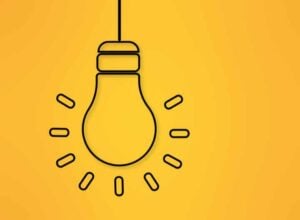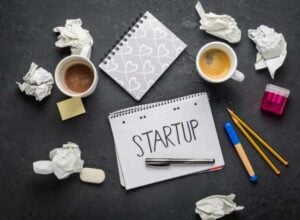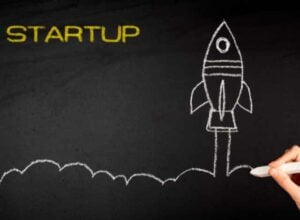To embark on a successful journey toward enhancing grant proposal success, it is crucial for companies to first understand their unique needs. This involves a thorough assessment of the organization’s current situation, including its strengths, weaknesses, opportunities, and threats (SWOT analysis). By identifying these elements, businesses can tailor their proposals to address specific challenges and leverage their strengths.
For instance, a tech startup may recognize that its primary need is to secure funding for research and development to innovate its product line. By clearly articulating this need in a grant proposal, the company can align its objectives with the funder’s priorities. Moreover, understanding the needs of the company also means engaging with stakeholders—employees, customers, and partners—to gather insights that can inform the proposal.
Conducting surveys or focus groups can provide valuable feedback on what areas require improvement or investment. For example, a manufacturing firm might discover through employee feedback that there is a pressing need for updated machinery to enhance production efficiency. By incorporating this information into the grant proposal, the company can present a compelling case that resonates with potential funders who are interested in supporting initiatives that lead to tangible improvements.
Identifying Key Areas for Improvement
Once a company has a clear understanding of its needs, the next step is to identify key areas for improvement. This process involves analyzing various aspects of the business, such as operational efficiency, employee productivity, and customer satisfaction. For instance, a retail business may find that its inventory management system is outdated and leads to frequent stockouts or overstock situations.
By pinpointing this issue, the company can propose a grant that focuses on upgrading its inventory management technology, thereby improving overall operational efficiency. Additionally, it is essential to prioritize these areas based on their potential impact on the organization’s goals. A nonprofit organization focused on community development might identify several areas needing improvement, such as outreach programs or volunteer engagement strategies.
However, by evaluating which area would yield the most significant benefits in terms of community impact and funding opportunities, the organization can concentrate its efforts on developing a targeted proposal that addresses that specific need. This strategic approach not only enhances the likelihood of securing funding but also ensures that resources are allocated effectively.
Incorporating Sustainable and Energy-Efficient Solutions
In today’s environmentally conscious landscape, incorporating sustainable and energy-efficient solutions into grant proposals is not just a trend; it’s a necessity. Funders are increasingly looking for projects that demonstrate a commitment to sustainability and environmental stewardship. Companies can enhance their proposals by highlighting how their initiatives will contribute to reducing carbon footprints or promoting renewable energy sources.
For example, a construction firm seeking funding for a new project could propose using sustainable materials and energy-efficient building practices, thereby appealing to funders who prioritize green initiatives. Furthermore, integrating sustainability into business operations can lead to long-term cost savings and operational efficiencies. A manufacturing company might explore options for reducing waste through recycling programs or implementing energy-efficient machinery.
By showcasing these efforts in their grant proposals, businesses can not only attract funding but also position themselves as leaders in sustainability within their industry. This dual focus on environmental responsibility and financial prudence can significantly enhance the overall appeal of a grant proposal.
Creating a Flexible and Collaborative Workspace
The modern workplace is evolving, with flexibility and collaboration becoming essential components of employee satisfaction and productivity. Companies should consider how their workspace design can foster creativity and teamwork while also accommodating individual work styles. In grant proposals, businesses can outline plans to create flexible work environments that include collaborative spaces, quiet zones for focused work, and technology-enabled meeting rooms.
For instance, a tech company might propose funding for an office redesign that incorporates open spaces for brainstorming sessions alongside private areas for deep work. Moreover, fostering a culture of collaboration extends beyond physical space; it also involves implementing tools and practices that encourage teamwork. Companies can highlight in their proposals how they plan to utilize collaborative software platforms or team-building initiatives to enhance communication and cooperation among employees.
By demonstrating a commitment to creating an inclusive and adaptable work environment, businesses can appeal to funders who value innovation and employee engagement as key drivers of success.
Utilizing Technology to Enhance Productivity
In an increasingly digital world, leveraging technology is paramount for enhancing productivity across all business functions. Companies should assess their current technological capabilities and identify areas where upgrades or new tools could lead to significant improvements. For example, an e-commerce business might explore implementing advanced analytics tools to better understand customer behavior and optimize marketing strategies.
By including these technological enhancements in their grant proposals, companies can illustrate how they plan to drive growth and efficiency through innovation. Additionally, training employees to effectively use new technologies is crucial for maximizing productivity gains. A healthcare organization seeking funding for electronic health record (EHR) systems could emphasize its commitment to providing comprehensive training programs for staff to ensure smooth implementation and adoption.
By addressing both the technological upgrades and the necessary training in their proposals, businesses can present a well-rounded approach that demonstrates foresight and planning.
Budgeting and Cost-Effectiveness
A well-structured budget is a cornerstone of any successful grant proposal. Companies must provide detailed financial plans that outline how funds will be allocated and demonstrate cost-effectiveness in their proposed initiatives. This involves not only estimating expenses but also identifying potential sources of matching funds or in-kind contributions that can enhance the proposal’s viability.
For instance, a nonprofit organization seeking funding for community outreach programs might include volunteer hours as part of its budget, showcasing community support and commitment. Moreover, businesses should be transparent about their financial needs while also demonstrating fiscal responsibility. Funders are more likely to support projects that show a clear return on investment (ROI) or long-term sustainability.
A renewable energy company could present a budget that outlines initial costs alongside projected savings from energy efficiency over time. By providing a comprehensive financial picture that highlights both immediate needs and long-term benefits, companies can strengthen their proposals and increase their chances of securing funding.
Ensuring Employee Satisfaction and Well-Being
Employee satisfaction is directly linked to productivity and retention rates; therefore, it should be a focal point in grant proposals. Companies must demonstrate how their proposed initiatives will enhance employee well-being and create a positive work environment. This could involve outlining plans for wellness programs, professional development opportunities, or initiatives aimed at improving work-life balance.
For example, a corporate entity might propose funding for mental health resources or flexible work arrangements as part of its commitment to employee satisfaction. Additionally, engaging employees in the proposal process can yield valuable insights into what initiatives would be most beneficial. Conducting employee surveys or focus groups can help identify specific areas where improvements are needed.
By incorporating this feedback into grant proposals, companies can present solutions that are not only aligned with organizational goals but also resonate with employees’ needs and aspirations.
Presenting a Comprehensive and Convincing Plan
Finally, presenting a comprehensive and convincing plan is essential for capturing the attention of potential funders. Companies should ensure that their proposals are well-organized, clearly written, and visually appealing. This includes providing an executive summary that succinctly outlines the project’s objectives, expected outcomes, and budgetary requirements.
Additionally, incorporating data and real-world examples can lend credibility to the proposal and demonstrate the potential impact of the proposed initiatives. Moreover, storytelling can be a powerful tool in grant proposals. By sharing compelling narratives about how funding will make a difference in the community or within the organization, companies can create an emotional connection with funders.
For instance, a nonprofit focused on education might share success stories of students whose lives have been transformed through its programs. By weaving together data-driven insights with personal stories, businesses can craft proposals that not only inform but also inspire action from potential funders. In conclusion, enhancing grant proposal success requires a multifaceted approach that begins with understanding the company’s needs and identifying key areas for improvement.
By incorporating sustainable solutions, creating flexible workspaces, leveraging technology, budgeting effectively, ensuring employee satisfaction, and presenting compelling plans, companies can significantly increase their chances of securing funding. With careful planning and execution, organizations can turn their visions into reality while making meaningful contributions to their communities and industries.























